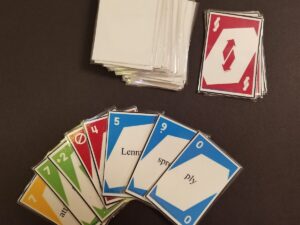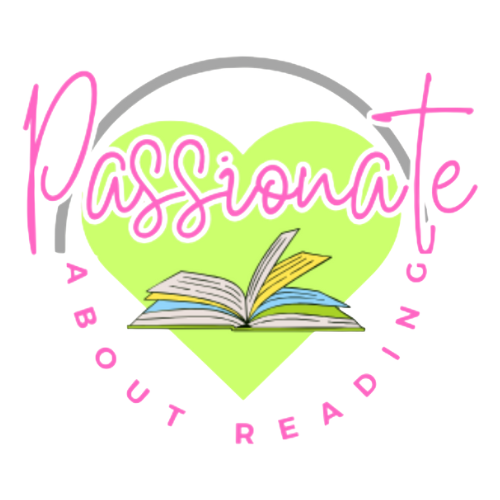Back when I was completing my Wilson Reading System practicum, I worked with a student who completely changed the way I teach. He was incredibly bright, on the autism spectrum, and also had dyslexia. Like so many of my students since, he worked so hard—but he also got frustrated when he made errors.
And I get it. Because when I get frustrated, it looks a lot like me trying to work the TV remotes in my family room. One for the TV, one for the sound, one for cable… and, of course, you just know I push all the buttons too fast. Then the whole system lags, switches inputs, and suddenly I’ve got a black screen while everyone is staring at me like, “Mommmmm, whad’juh dooooo?” And at that point, I just want to throw the remote out the window.
That’s exactly how my student felt when Wilson lessons got tough. Wilson is powerful, but it’s also a lot of repetition, and sometimes it drags. He’d sigh, slump in his chair, and beg, “Can we just play a game?”
At first, I stuck to the script: “No, buddy, this is important work.” But deep down I knew—if I’m bored, he’s definitely bored. And you can’t learn when your brain feels like you’re stuck wrestling remotes that don’t cooperate.
The First Game
Finally, I caved. But I had a lot of trouble finding phonics games that aligned with Wilson. So I decided if I couldn’t find a game I’d just do it myself (Remember the Little Red Hen?). So I whipped up a basic UNO-style card game with Wilson words.
Boom. Instant magic.
Instead of dragging his feet, he leaned forward, smiling, ready to play. I made another set for Step 2. Same excitement! He didn’t even realize he was still decoding, blending, and practicing fluency. He just thought we were playing a game.
Fridays quickly became “Fun Fridays.” We were practicing the same skills, but the vibe was completely different. And honestly? I wasn’t dreading it either. Teaching became more fun when I wasn’t dragging kids through lessons like a clunky cable remote.
From UNO to Kaboom….and so on and so on….
That first game opened the floodgates. I made Go Fish! to go with the -ng, -nk welded sounds (in Step 2), then Kaboom. And Bingo. Then Wheel of Fortune and color by code. Currently, I’m working on board games that they’re IN LOVE with. Each game gave students the practice they needed but without the groans. Other Wilson teachers saw what I was doing and asked for copies, and I realized—this wasn’t just me trying to fight the tedium that can come with our intense Wilson lessons. This was a way to keep all my students engaged all the time.
Why Card Games Work & Why You Should Try Them Too
So what’s the secret sauce? Why do games like UNO, Kaboom, and Go Fish work so well for students with dyslexia? Here are three big reasons:
1. Repetition Without the Eye Rolls
Wilson thrives on repetition. Students need it. But if you say the word “repetition” out loud, you’ll probably get the same look I give my husband when he hands me yet another remote: death stare.
Games sneak repetition in without making it feel like Groundhog Day. In UNO, for example, kids read words every time they play a card. In Kaboom, they’re practically begging for another turn, which means more reading practice. They don’t realize how much decoding they’re doing—they’re too busy trying to win or outsmart their friends.
2. Mistakes Feel Safer
Remember my TV remote fiascos? I push buttons too fast, and the whole thing collapses. The frustration level goes from zero to meltdown in about 3.2 seconds. That’s how my student felt when he made mistakes—like one error derailed the whole lesson.
But when we gamified practice, mistakes weren’t such a big deal. If he misread a word during UNO, it wasn’t the end of the world—it was just part of the game. The pressure lifted.
Games create a low-stakes environment where students can take risks, mess up, and try again. For kids who live with constant reminders of what’s “hard” for them, this is huge. And once they feel successful in a game, that confidence spills over into tougher tasks.
3. Engagement = More Practice Time
So what’s the secret sauce? Why do games like UNO, Kaboom, and Go Fish work so well for students with dyslexia? Here are three big reasons:
- Repetition Without the Eye Rolls- Wilson thrives on repetition. Students need it. But if you say the word “repetition” out loud, you’ll probably get the same look I give my husband when he hands me yet another remote: the doom stare. Games sneak repetition in without making it feel like Groundhog Day. In UNO, for example, kids read words every time they play a card. In Kaboom, they’re practically begging for another turn, which means more reading practice. They don’t realize how much decoding they’re doing—they’re too busy trying to win or outsmart their friends.
- Mistakes Feel Safer- Remember my TV remote fiascos? I push buttons too fast, and the whole thing collapses. The frustration level goes from zero to meltdown in about 3.2 seconds. That’s how my student felt when he made mistakes—like one error derailed the whole lesson. But when we gamified practice, mistakes weren’t such a big deal. If he misread a word during UNO, it wasn’t the end of the world—it was just part of the game. The pressure lifted. Games create a low-stakes environment where students can take risks, mess up, and try again. For kids who live with constant reminders of what’s “hard” for them, this is huge. And once they feel successful in a game, that confidence spills over into tougher tasks.
- Engagement = More Practice Time- Keeping kids engaged in a structured literacy lesson is basically an Olympic sport. You’ve got decodable words, controlled text, dictation, spelling—and about ten minutes before their eyes glaze over. Games change that. Suddenly, kids want to keep playing. They don’t notice how long they’ve been practicing because they’re busy laughing, strategizing, and competing. It’s like vegetables hidden in spaghetti sauce—they’re still getting the nutrition, they just don’t realize it.
How to Start Using Games in Wilson Lessons
You don’t need fancy supplies. My first UNO game was literally just words scribbled on colored cardstock. The kids didn’t care—they were thrilled.
If you want to try it, start small:
- Pick one format (UNO, Kaboom, Go Fish).
- Use words from your current Wilson step.
- Set clear rules: “The first time you read it counts.”
That rule alone makes accurate decoding the golden ticket. Kids suddenly want to get it right so they can stay in the game. It’s sneaky, effective, and—dare I say—fun for us, too.
And don’t worry about “losing” instructional time. You’re not. You’re gaining student buy-in, effort, and enthusiasm, which means they’ll actually practice more.
Final Thoughts
I never set out to become “the card game teacher.” Honestly, I just wanted to stop my practicum student from shutting down. But what started as one desperate experiment has become one of my favorite teaching tools.
Card games have turned lessons into something my students (and I) look forward to. They’ve transformed frustration into laughter, and they’ve shown me that learning doesn’t have to feel like a grind to be effective.
So if you’re teaching Wilson—or any structured literacy program—I can’t recommend games enough. They’ve been a game-changer (pun fully intended) for my students, my colleagues, and yes, even for me.
👉 Want ready-to-use card games that align with Wilson? Check out my collection of card games. Your students will thank you—and you might just find yourself laughing along with them.

